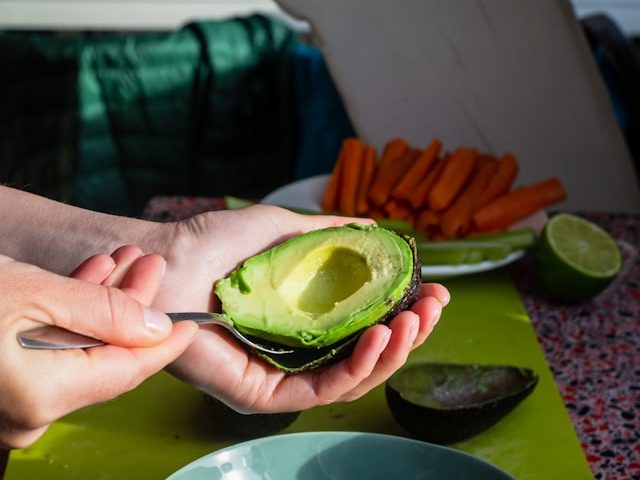The Problem
Small Intestine Bacterial Overgrowth is an accumulation of bacteria in the small intestine.
In a “normal” state, bacteria are predominantly found in our large intestine, with far fewer existing in the small intestine. These bacteria (as well as some species of yeast) are what make up our gastrointestinal microbiota, which is responsible for helping us to digest our foods and maintaining a healthy gut-brain axis. In SIBO, bacteria of the large intestine become overgrown and invade the small intestine. This overgrowth can cause the following gastrointestinal symptoms:
- Bloating
- Abdominal pain & cramping
- Gas
- Diarrhea
- Constipation
- Heartburn
- Nausea
If someone has SIBO, a combination of these symptoms will be present, regular, and persistent for three months or longer (and because of these symptoms, in the conventional world, SIBO is often mistaken for IBS). If we experience one or more of these symptoms every once in a while, we are likely not experiencing SIBO.
Other issues and symptoms of SIBO
- Acid Reflux!!! The next time you have acid reflux check to see if you ate any simple carbs or high fodmap foods beforehand. The bacteria “ferment” these carbs which can cause the food to “shoot” back up your throat and give you reflux.
- The bacteria can interfere with normal digestion and absorption of food.
- They (the bacteria) consume some of your food which over time leads to deficiencies in nutrients such as iron and B12, which can cause anemia or chronic low ferritin.
- They consume food that isn’t efficiently absorbed due to small intestine lining damage, which continues the overgrowth (a vicious cycle).
- After eating your food, they produce gas, within the small intestine area. The gas causes abdominal bloating, abdominal pain, constipation, diarrhea or both (the symptoms of IBS). Excess gas can also cause belching and flatulence.
- They decrease proper fat absorption by deconjugating bile, which can lead to deficiencies of vitamins A & D and fatty stools.
- Through the damaged lining, larger food particles not able to be fully digested, can enter into the body which the immune system can react to. This can cause food allergies/ sensitivities.
- Bacteria themselves can also enter the body/bloodstream. Immune system reaction to bacteria and their cell walls (endotoxin) can cause chronic fatigue and body pain and burden the liver.
- Finally, the bacteria excrete acids which may, in high amounts lead to neurological and cognitive symptoms.
The Solution
Neem!
Why
Neem has properties that kill bacteria similar to antibiotics but Neem is a herb and when taken responsibly, isn’t expected to disrupt the microbiome. Especially not to the same degree as antibiotics.
How it works:
Over time, it will kill the excess and improperly placed bacteria residing in the small intestine
How do I know it works?
It worked for me and Neem is a go-to herb in Ayurveda. Ayurveda is considered one of the oldest of the traditional systems of medicine (TSMs) accepted worldwide and has been around for the past 3000 years.
Science studies
- https://www.ncbi.nlm.nih.gov/pmc/articles/PMC4791507/
- https://www.mskcc.org/cancer-care/integrative-medicine/herbs/neem – properties
- https://www.ncbi.nlm.nih.gov/pmc/articles/PMC9195866/ – antibacteria
- https://www.sciencedirect.com/science/article/pii/S1756464620303959
- Ayurveda description of Neem
Clinician confirmations
- I confirmed that this is a solution with a herbalist clinic that specializes in GI tract and microbiome health
- Katie Stage, ND, RH (AHG), FABNG is a naturopathic physician and registered herbalist of the American Herbalists Guild that has endorsed and recommends Neem as a tool for eliminating/reducing SIBO
How to take it
Take ½ tsp with water in the morning and evening on an empty stomach away from food: 2-3 hours to be safe because neem has been shown to reduce stomach acid secretions which are important for the digestion of food, especially protein and fat. Take for 2-4 weeks or until symptoms have fully or mostly resolved. If you still have symptoms after 4 weeks it’s possible you don’t have SIBO!
- If you buy a supplement follow their dosing instructions.
Knowing when to stop
When you no longer have symptoms after eating. Your symptoms disappear because the bacteria levels in the small intestines are probably very low or non-existent. I don’t recommend daily use of neem once your symptoms are gone.
If symptoms come back
You can follow the initial instructions but it’ll likely take a much shorter time before your symptoms disappear. The bacterial growth seems to grow back over time if your diet or other root cause issues are not addressed.
Things that may happen during use:
- Diarrhea
- May have slight discomfort for 2-3 days, if there is discomfort any longer than that then likely better to discontinue.
Where to get it
- Cheapest option (Less than 5$):
- I recommend finding your nearest herb store and checking to see if they sell herbs in a manner that lets you measure and decide how much you want.
- Online:
- https://amzn.to/3Oy5kdb
- https://shop.organicindiausa.com/products/neem?pr_prod_strat=jac&pr_rec_id=f382e4979&pr_rec_pid=4768877740168&pr_ref_pid=4773859950728&pr_seq=uniform&selling_plan=3505193209
Warning: You will be able to find Neem on Amazon but I suggest you make sure you know you’re actually receiving an authentic product. Some Amazon sellers make it seem like what they’re selling is authentic when it’s not.
Ultimately, use your intuition please!
I don’t think there’s any human that can definitely say when and for how long we should take things because all of us are unique beings. Because of this, using our intuition or inner knowing may be a required decision-making tool in some instances and I think this is one of them. If you think Neem would be a good fit for you based on the information I’ve presented and your personal research, give it a shot. If you don’t think it’d be a good fit for you for whatever reason, I encourage you to hold off on using it for now. You may find that now isn’t a good time but sometime in the future is.
Tips for finding your SIBO root cause
Citations
- https://www.siboinfo.com/learning-more.html
- https://www.thepaleomom.com/modifying-paleo-small-intestinal/#how-is-sibo-treated




